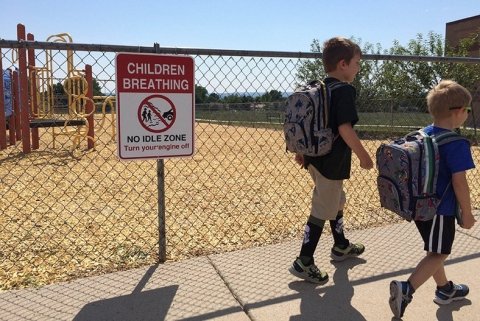With schools back in session returns the inevitable procession of parents waiting for their children in parking lots. Unfortunately, many of these parents idle their vehicles, wasting fuel and producing both smog-forming and greenhouse gas emissions. As children are dropped off and picked up from school each day, they walk into invisible-yet-harmful fumes created by the dozens of idling vehicles outside their school. Children are particularly susceptible to pollution, thus reducing these emissions can help improve air quality and students' health.
Idle reduction efforts are particularly important in school zones due to the impacts of exhaust on children’s lungs, which continue to develop until the age of 18. Exposure to excess exhaust and smoke can stunt lung growth and contribute to many lung disorders, including asthma. Children are more at risk because of their faster rates of respiration and the amount of time they spend playing outdoors.
In addition to averting air quality problems, there are other benefits, too. Parents enjoy the fuel savings realized by simply shutting off the engine while waiting. In addition to greenhouse gas reductions, There is also less wear on the engine when idling is reduced, and the quieter noise level is an unexpected but very welcome benefit.
Thankfully, various Clean Cities coalitions, supported by the Department of Energy's Vehicle Technologies Program, have stepped up to reduce idling at schools. The Clean Cities program also provides the IdleBox Toolkit, a free online education and outreach resource, for people who want to start their own idle-reduction campaigns. If you would like your local school to become idle-free, check out these great resources and contact your nearest Clean Cities coordinator. Kids and their parents can make a difference when it comes to improving air quality and children's health. It makes the return to school a little more pleasant for parents and students.
Subscribe to receive updates from Energy Saver, including new blogs, updated content, and seasonal energy saving tips for consumers and homeowners.



